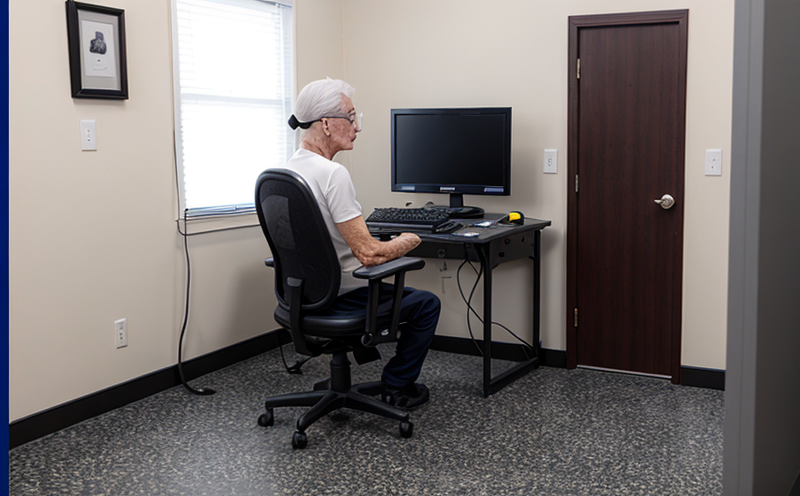AATCC 124 Appearance retention of fabrics after repeated laundering
The AATCC Test Method 124 evaluates the appearance retention of fabrics following multiple cycles of home laundering. This standardized test is essential for quality managers and compliance officers to ensure that fabric products maintain their aesthetic qualities throughout consumer use, thereby enhancing customer satisfaction.
Appearance retention is a critical factor in the textile industry as it affects both the functionality and aesthetics of the final product. The repeated washing process can lead to changes in color fastness, texture, and overall appearance of fabrics. By adhering to AATCC 124, manufacturers can ensure that their products meet high standards of quality and durability.
The test involves subjecting the fabric sample to a specified number of washing cycles using a standard detergent and water temperature according to the conditions outlined in the method. After each cycle, the samples are dried and inspected for changes in color fastness, luster, texture, and overall appearance. The results provide valuable insights into the performance of the fabric under real-world usage conditions.
The AATCC 124 test is particularly important for weaves that need to maintain their visual appeal over time. It helps textile manufacturers identify potential issues early in the development process and make necessary adjustments to improve product quality.
Understanding the parameters of this test is crucial for R&D engineers who are responsible for developing new fabric products. By familiarizing themselves with AATCC 124, they can ensure that their designs meet the required standards and perform well under repeated washing conditions.
This test is also relevant to procurement officers as it helps them select suppliers who produce fabrics that adhere strictly to high-quality standards. Ensuring compliance with this standard ensures that all products are consistent in terms of appearance retention after washing, which is a key factor for maintaining brand reputation and customer trust.
Scope and Methodology
The AATCC 124 test method covers the evaluation of the appearance retention of fabrics after multiple cycles of home laundering. The standard specifies the procedures to be followed, including sample preparation, washing conditions, drying methods, inspection criteria, and reporting requirements.
- Sample Preparation: Samples are prepared according to specified dimensions and weight.
- Washing Conditions: Fabric samples undergo a predetermined number of wash cycles using a standard detergent at a specific water temperature.
- Drying Methods: Dried samples must be cooled in a controlled environment to prevent any further color changes or texture alterations.
- Inspection Criteria: Samples are visually inspected for changes in color fastness, luster, and overall appearance after each cycle of washing.
- Reporting Requirements: Results are recorded and reported according to the standard format provided by AATCC.
This standardized approach ensures that all tests conducted under this method yield consistent results, facilitating quality control and compliance with industry standards.
Why Choose This Test
Selecting the appropriate testing methods is crucial for ensuring product quality. The AATCC 124 test offers several advantages over other testing protocols:
- Real-world Relevance: The test simulates actual consumer use conditions, providing insights into how fabrics will perform under real-life scenarios.
- Standardized Procedure: Following a standardized procedure ensures that all tests are conducted consistently, leading to reliable and reproducible results.
- Comprehensive Evaluation: The test evaluates multiple aspects of fabric appearance retention, including color fastness, luster, and texture changes.
- Industry Recognition: AATCC 124 is widely recognized and accepted by industry professionals, ensuring that your products meet the highest quality standards.
By choosing this test, you can ensure that your fabric products maintain their appearance and quality over time, thereby enhancing customer satisfaction and loyalty. This test is particularly beneficial for manufacturers looking to improve product durability and visual appeal in a cost-effective manner.
International Acceptance and Recognition
The AATCC 124 test method is widely accepted and recognized across the globe, with its results being used by various stakeholders including manufacturers, suppliers, and consumers. Its international acceptance can be attributed to several factors:
- Global Standardization: The standard is aligned with international norms and practices, ensuring consistency in testing procedures.
- Cross-industry Use: The test method is applicable across various sectors, including home textiles, fashion apparels, and industrial fabrics.
- Regulatory Compliance: Many regulatory bodies around the world reference AATCC 124 as a standard for evaluating fabric quality.
The results of this test are respected in numerous countries, making it an essential tool for manufacturers aiming to meet global market demands. Its acceptance ensures that your products are recognized and trusted by consumers worldwide.





